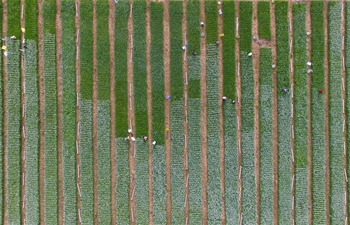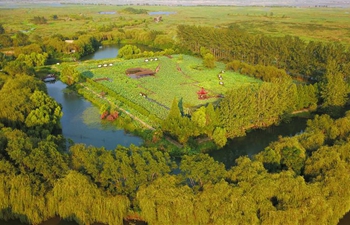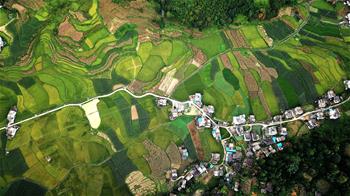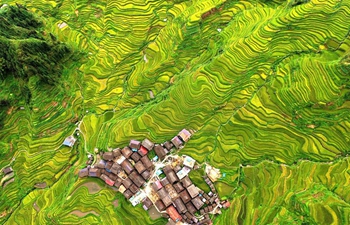WASHINGTON, Sept. 6 (Xinhua) -- A study published on Thursday in the journal Science showed that a massive wind and solar installation in the Sahara Desert and neighboring Sahel would increase local temperature, precipitation and vegetation, thus benefiting the region.
The study is among the first to model the climate effects of wind and solar installations while taking into account how vegetation responds to changes in heat and precipitation, according to its lead author Li Yan, a postdoctoral researcher in natural resources and environmental sciences at the University of Illinois.
Wind and solar farms are known to have local effects on heat, humidity and other factors that may be either beneficial or detrimental to the regions in which they are situated.
The wind and solar farms simulated in the study would cover more than 9 million square kilometers and generate, on average, about 3 terawatts and 79 terawatts of electrical power, respectively.
"In 2017, the global energy demand was only 18 terawatts, so this is obviously much more energy than is currently needed worldwide," Li said.
The model revealed that wind farms caused regional warming of near-surface air temperature, with greater changes in minimum temperatures than maximum temperatures.
The greater nighttime warming takes place because wind turbines can enhance the vertical mixing and bring down warmer air from above, according to the study.
Precipitation also increased as much as 0.25 millimeters per day on average in regions with wind farm installations.
"This was a doubling of precipitation over that seen in the control experiments," Li said.
In the Sahel, average rainfall increased 1.12 millimeters per day where wind farms were present.
This increase in precipitation, in turn, leads to an increase in vegetation cover, creating a positive feedback loop, said Li.
Solar farms have a similar positive effect on temperature and precipitation, but unlike the wind farms, the solar arrays have very little effect on wind speed.
"The rainfall increase is a consequence of complex land-atmosphere interactions that occur because solar panels and wind turbines create rougher and darker land surfaces," said the paper's co-author Eugenia Kalnay from University of Maryland.
The increase in rainfall and vegetation, combined with clean electricity as a result of solar and wind energy, could help agriculture, economic development and social well-being in the Sahara, Sahel, Middle East and other nearby regions, according to the study.

















